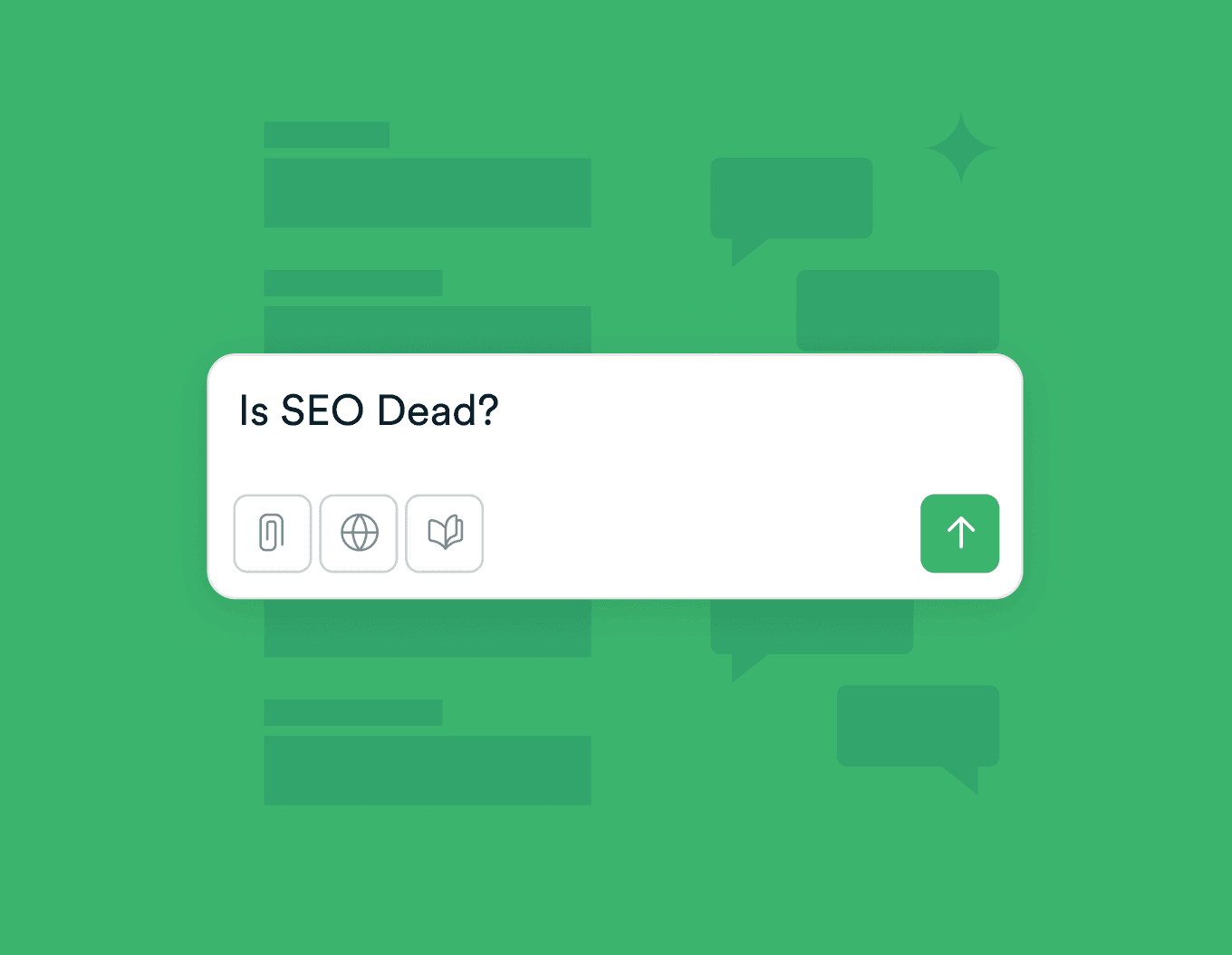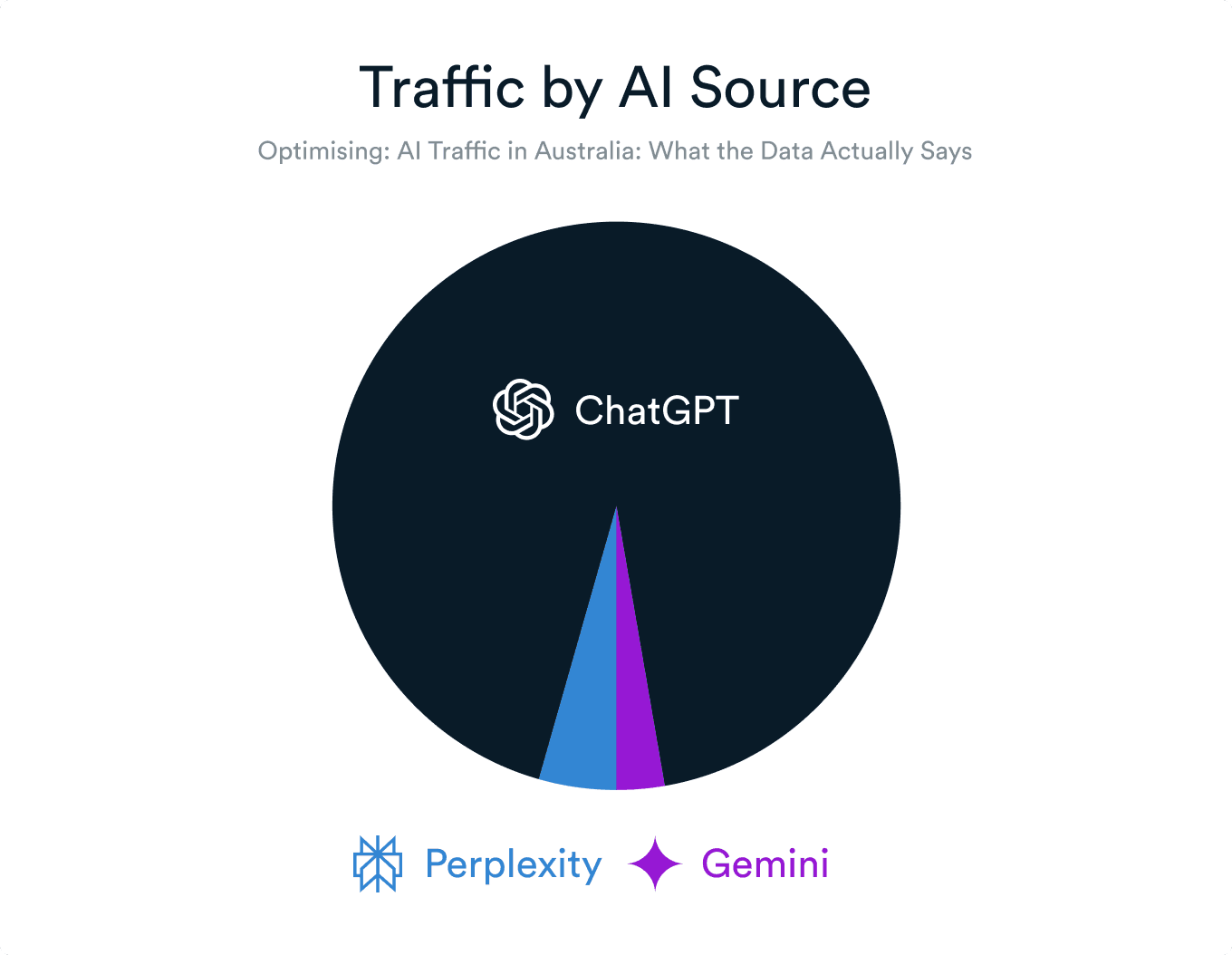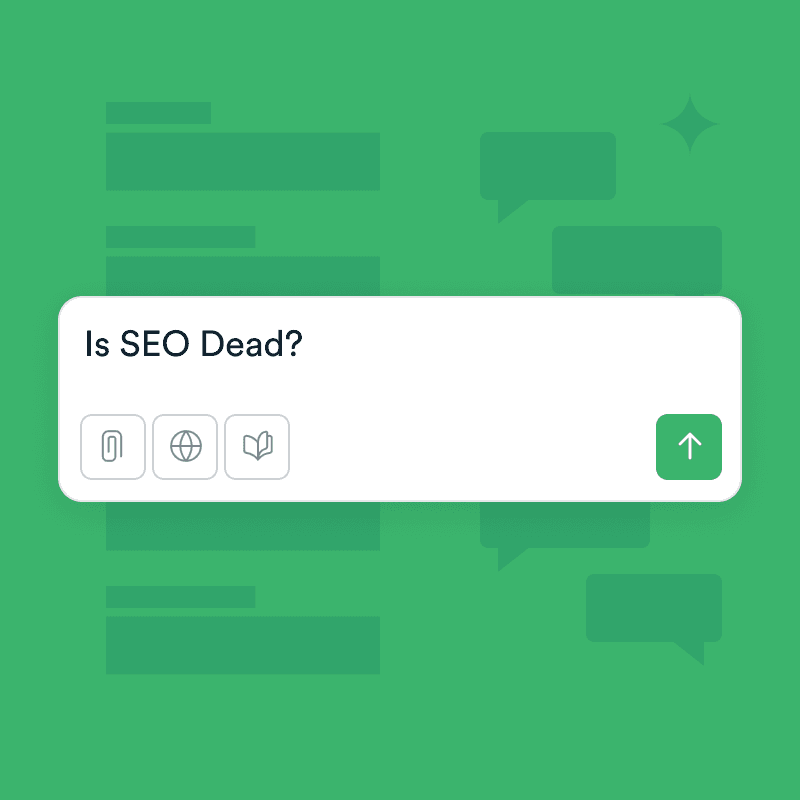
Search isn’t just about showing up on Google’s results page anymore. AI is reshaping how people find, compare and interact with information, but that doesn’t mean SEO is dead, it’s evolving. Brands that adapt early, explore new platforms and maintain strong fundamentals will stay visible and trusted as discovery shifts from links to cited answers.
SEO vs AI search evolution
AI-driven search is growing quickly, but it’s still early days. Search will become personalised, predictive and multimodal. Search engines will morph into ecosystems of answers and AI tools will act more like browsers. AI is changing how answers are delivered and how people reach a website, but they still need to reach one.
Core SEO principles remain the foundation of visibility. A strong brand, useful content and clean site structure help both classic search and AI platforms interpret and trust your pages. Google hasn’t been replaced; it's still driving around 85% of global organic search traffic.
AI can answer questions, but they can’t deliver services. SEO is evolving into visibility across all AI interfaces with AI search optimisation now a new layer of SEO. And yes, organic click-through rate is declining as AI answers absorb intent, but brand mentions and citations are rising in value and where and how people search is changing. But ultimately, AI search optimisation is just good SEO but built for AI.

Who’s driving AI search traffic?
The biggest platforms reshaping the search today are Google (Search, AI Overviews, AI Mode, Gemini), ChatGPT, Perplexity, Claude and Microsoft Copilot.
In a recent study by Optimising covering 118 Australian businesses and 24.8 million website sessions, they found that ChaptGPT currently drives around 90% of AI-search traffic, with Perplexity at 4%, Gemini at 2.5%, and Claude and Copilot steadily growing. And while Google still sees the most search traffic, AI search is steadily rising.
The study also highlighted that AI‑driven visits rose by a median 1,200% year on year, and 88.5% of sites now receive AI‑referred traffic; for ecommerce, conversion rates averaged 1.35% from AI‑driven traffic versus 1.60% from organic. It’s evident that AI search is fast becoming a mainstream behaviour for research and shopping with traffic rising 531.8% in over two years.
How to optimise for AI visibility
If you want AI models to find and trust your website, technical accessibility matters as much as content quality, as well as good SEO. Make it easy for both Google and AI systems to crawl, render and select content on your site and back it with proof and evidence so people and AI can trust, cite and reward your site. The more relevant, fresh and credible your content is, the more likely AI systems are to surface it.
Technical optimisation checklist
- New websites must opt out of blocking for AI platforms, opt in to AI user bots is essential and opt in to training data is recommended.
- Render essential content server‑side so key copy exists in initial HTML.
- Keep response and render performance fast to avoid crawler timeouts.
- Maintain XML sitemaps, correct canonicals and clear IA.
Content & authority optimisation
- Ensure page titles and meta descriptions and heading structures are clear and logical.
- Attribute content to real authors with authentic bios.
- Cite credible sources for facts and claims where relevant.
- Publish transparent policies (pricing, delivery, returns, privacy) to strengthen trust.
- Use AI-assisted content creation strategically for things like quality checking outputs but avoiding publishing in bulk.
- Strengthen brand recognition through consistent mentions and earned media.
- Reclaim unlinked mentions and fix broken links.
Tracking & measurement
To stay ahead you need to focus on measuring what matters now and being adaptable as the landscape changes:
- Track AI traffic with emerging tools like Waikay and Hall; GA4 captures some referrals, but attribution can be masked or cross‑device.
- Don’t drop Google SEO, instead balance your approach while you build AI readiness; consider prompt reporting to see which AI queries surface your brand.
- Expect a shift from click metrics to appearances, citations and brand mentions across AI surfaces.
- Add Agent Experience (AX) checks - can an AI agent parse your schema, stock and price to recommend you?
- Guard against content dilution by investing in original research, experts and verifiable assets.

Is SEO is not dead
AI is changing how answers are delivered, not the need to find and trust your brand. By pairing solid SEO foundations with AI‑ready access, content and measurement, your business will stay visible as discovery shifts from links to cited answers.
It’s the businesses that make their content easy for both humans and AI to understand that will stay ahead of their competitors as AI search moves from early adoption to everyday behaviour.
Interested in optimising your digital platform?
The team at Inlight helps Australian businesses create impactful digital solution with practical, measured approaches. Reach out to discuss your specific context and opportunities and make sure to follow us on LinkedIn to hear about upcoming webinars and events.
This article was co-authored with James and Daniel from Optimising, our SEO partners.




